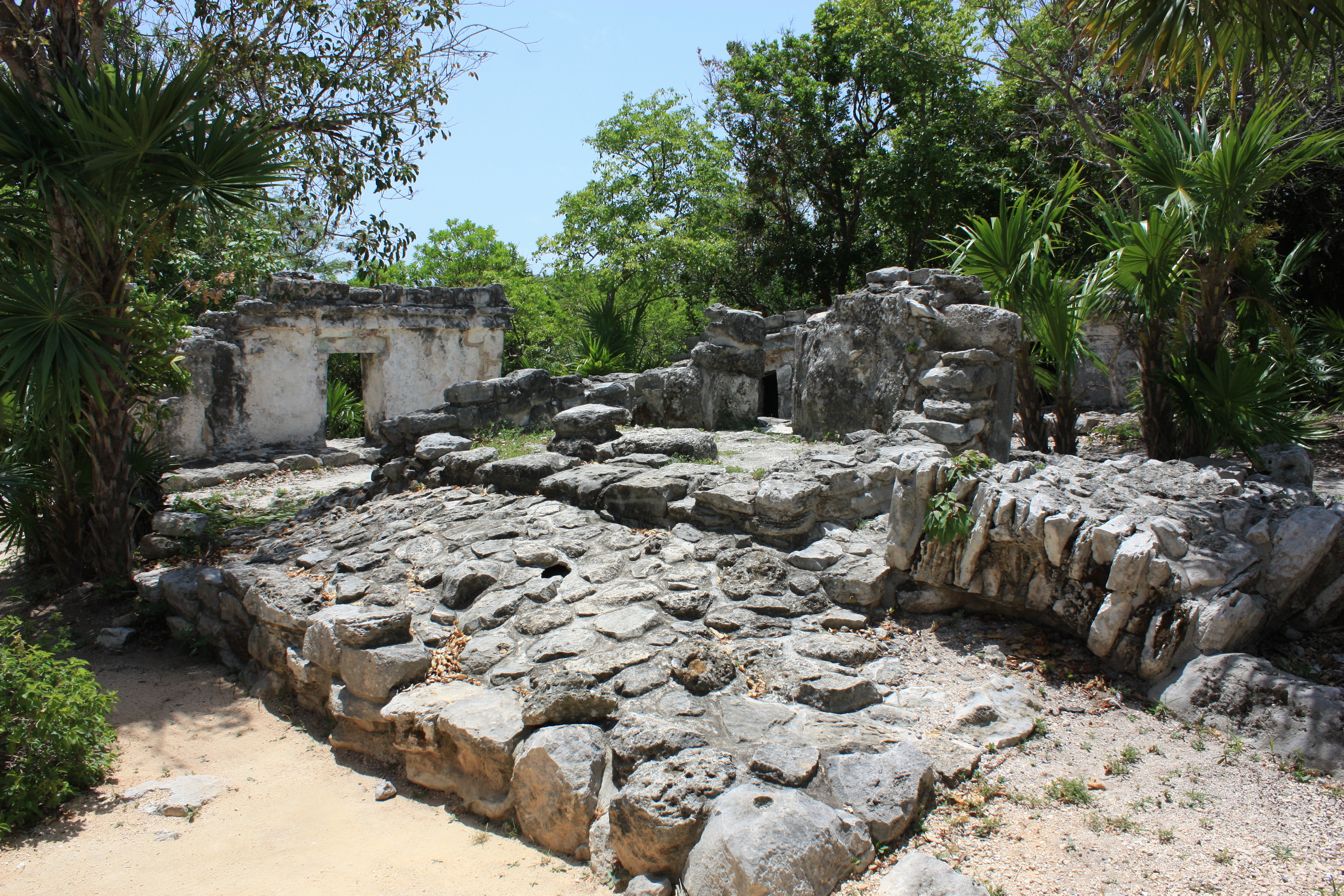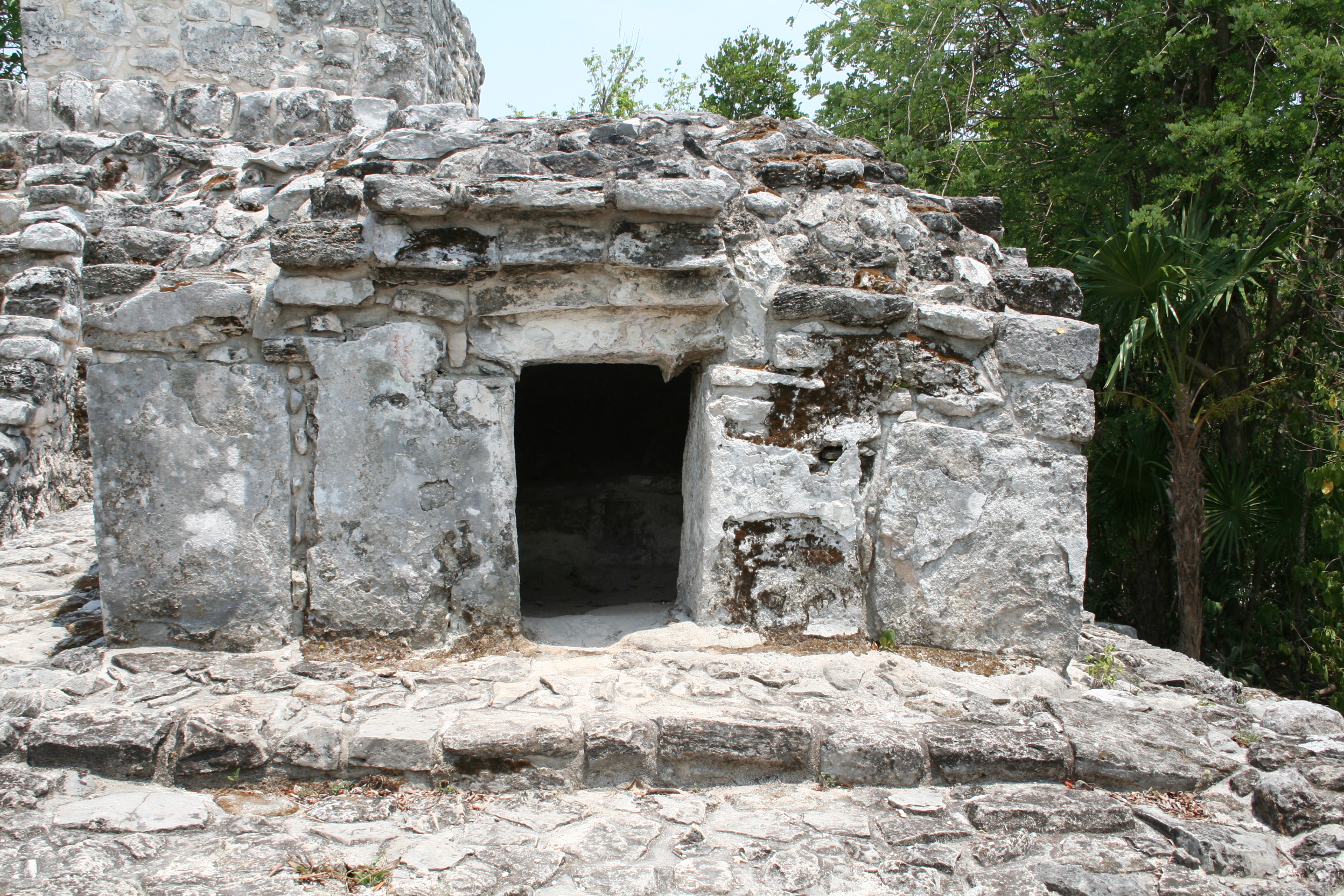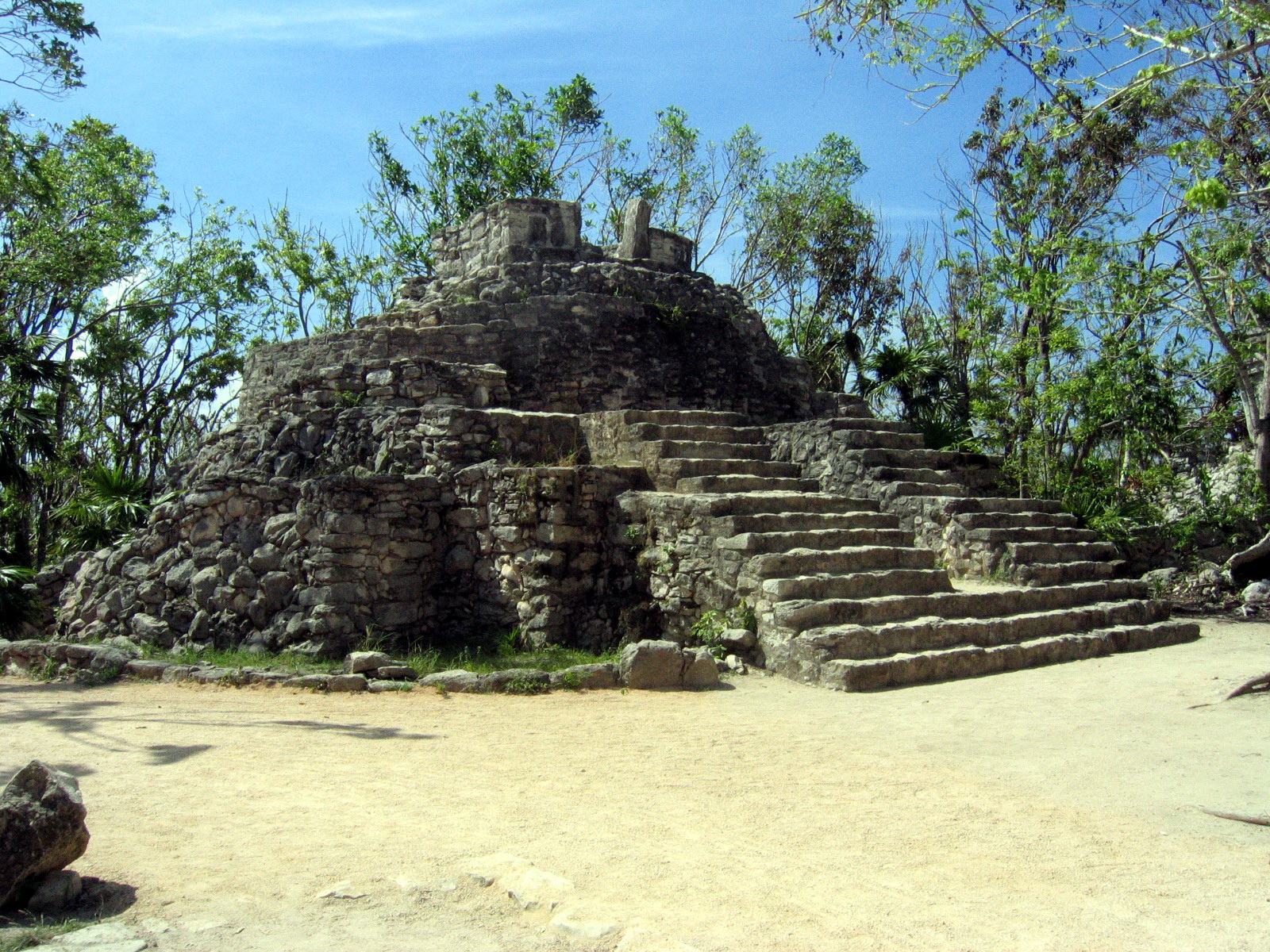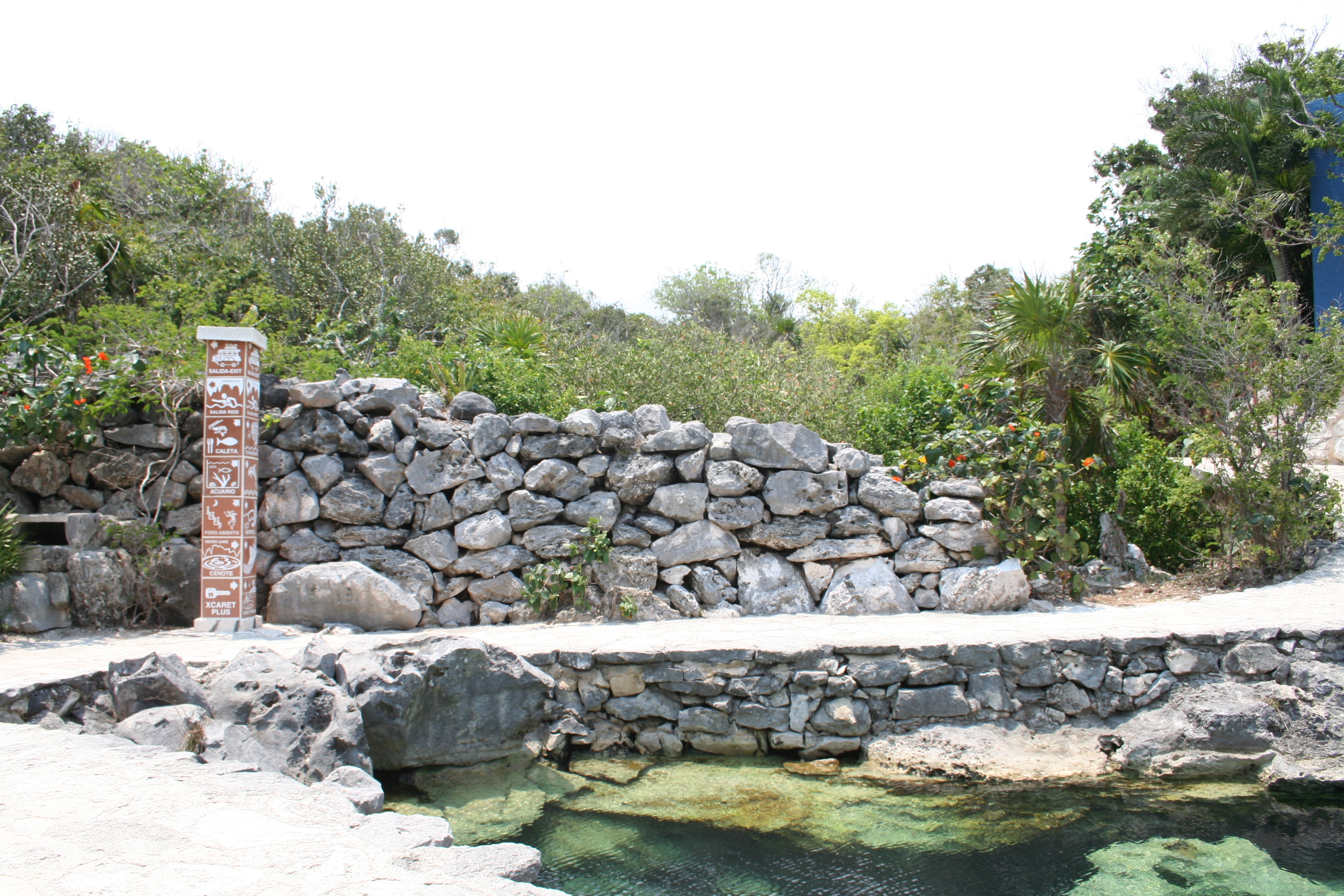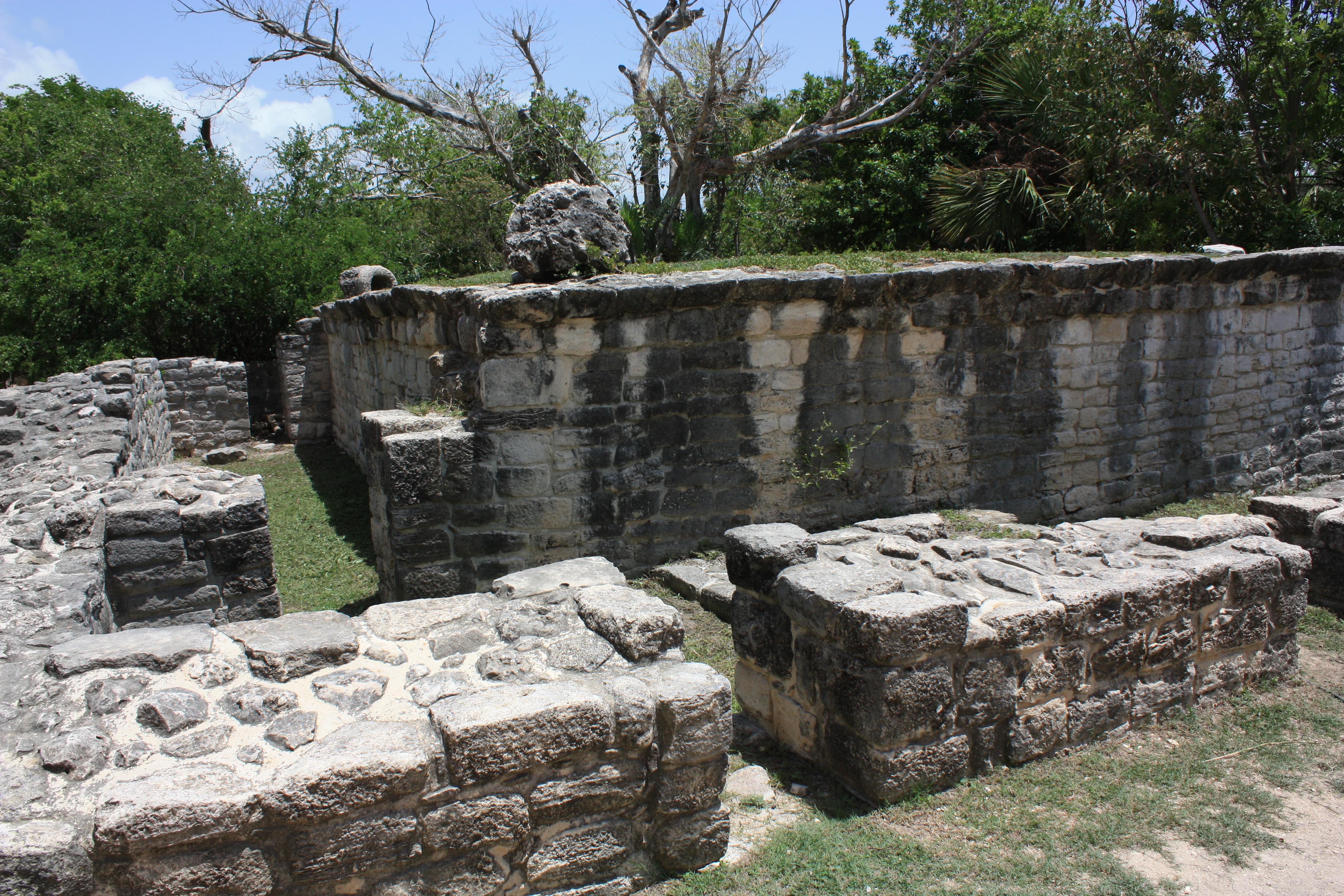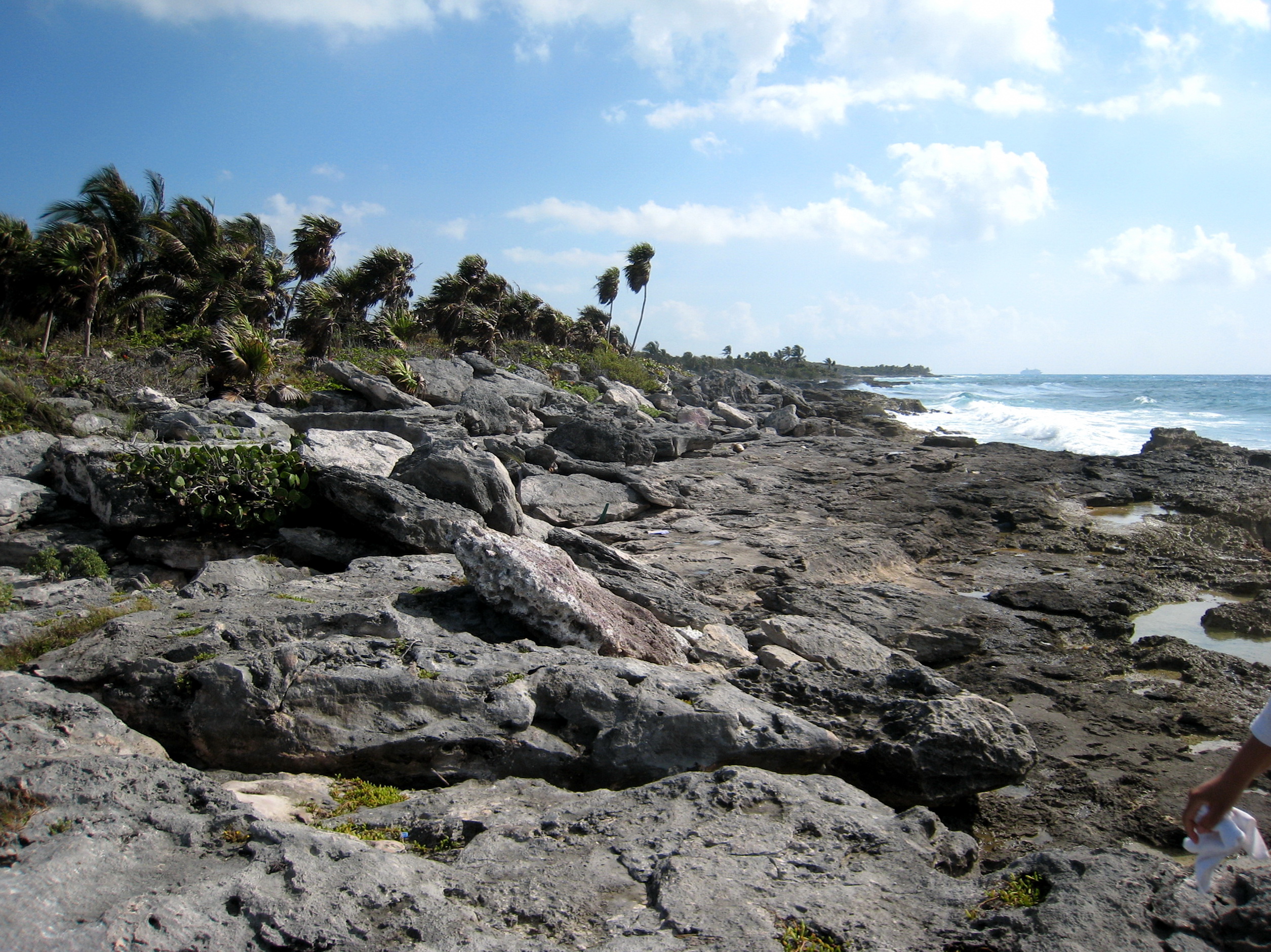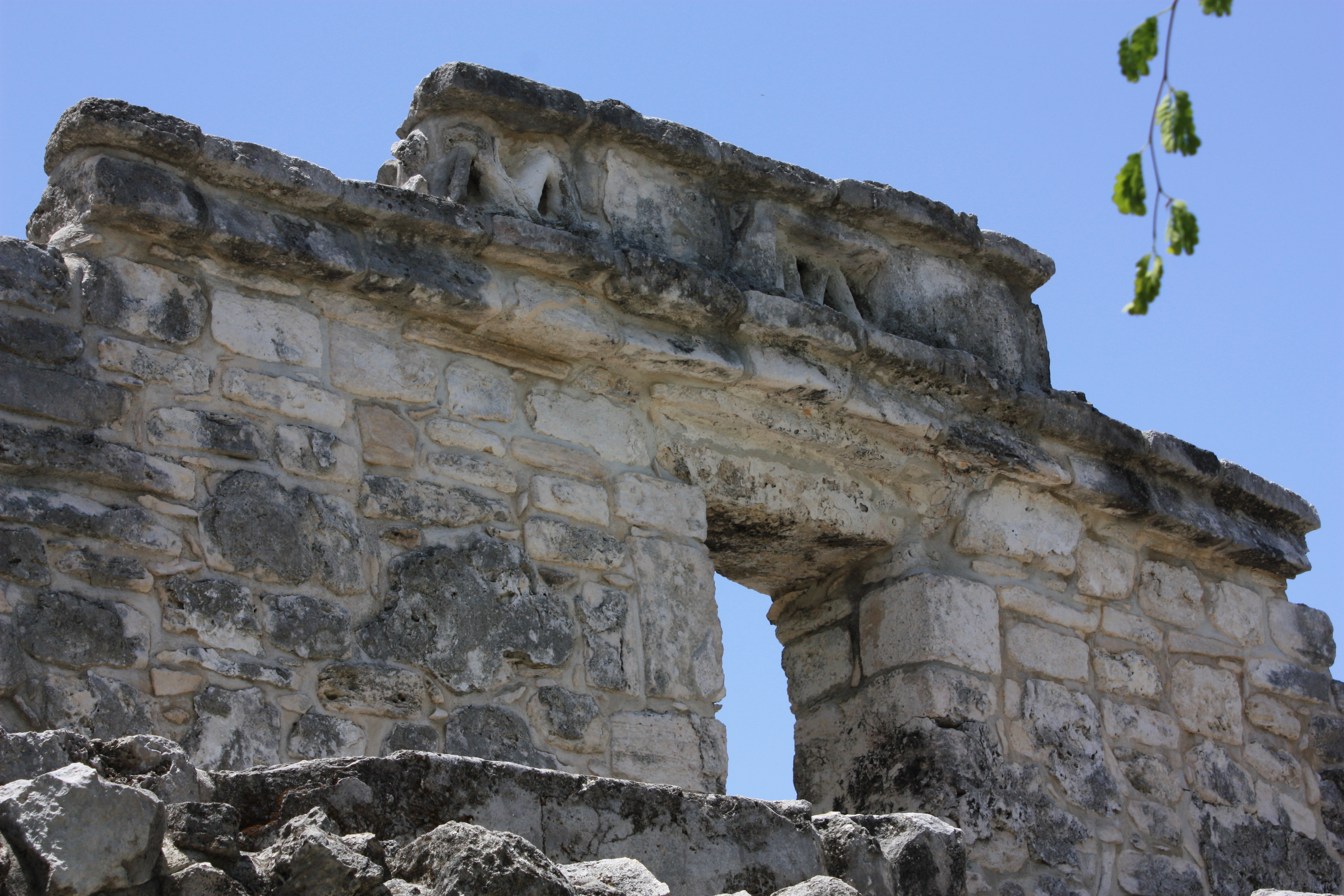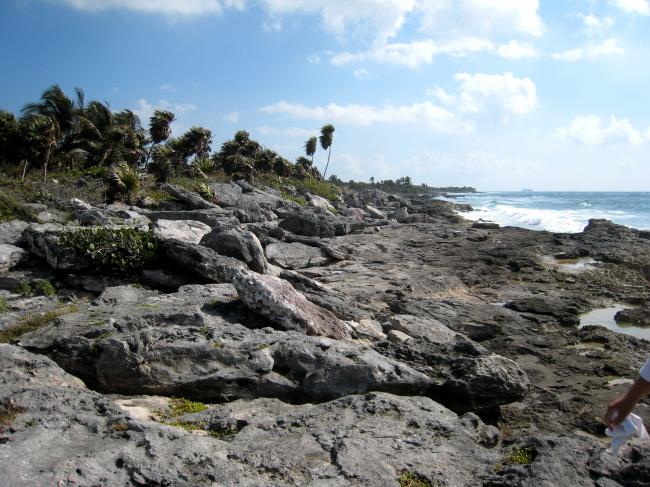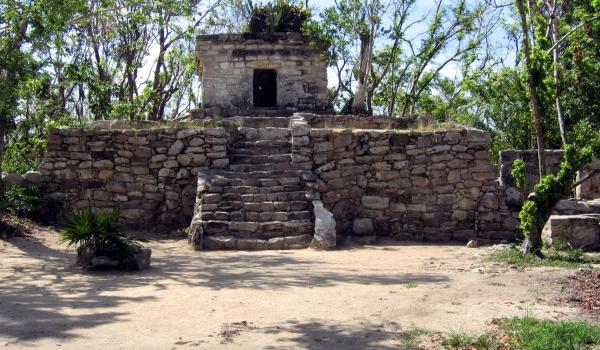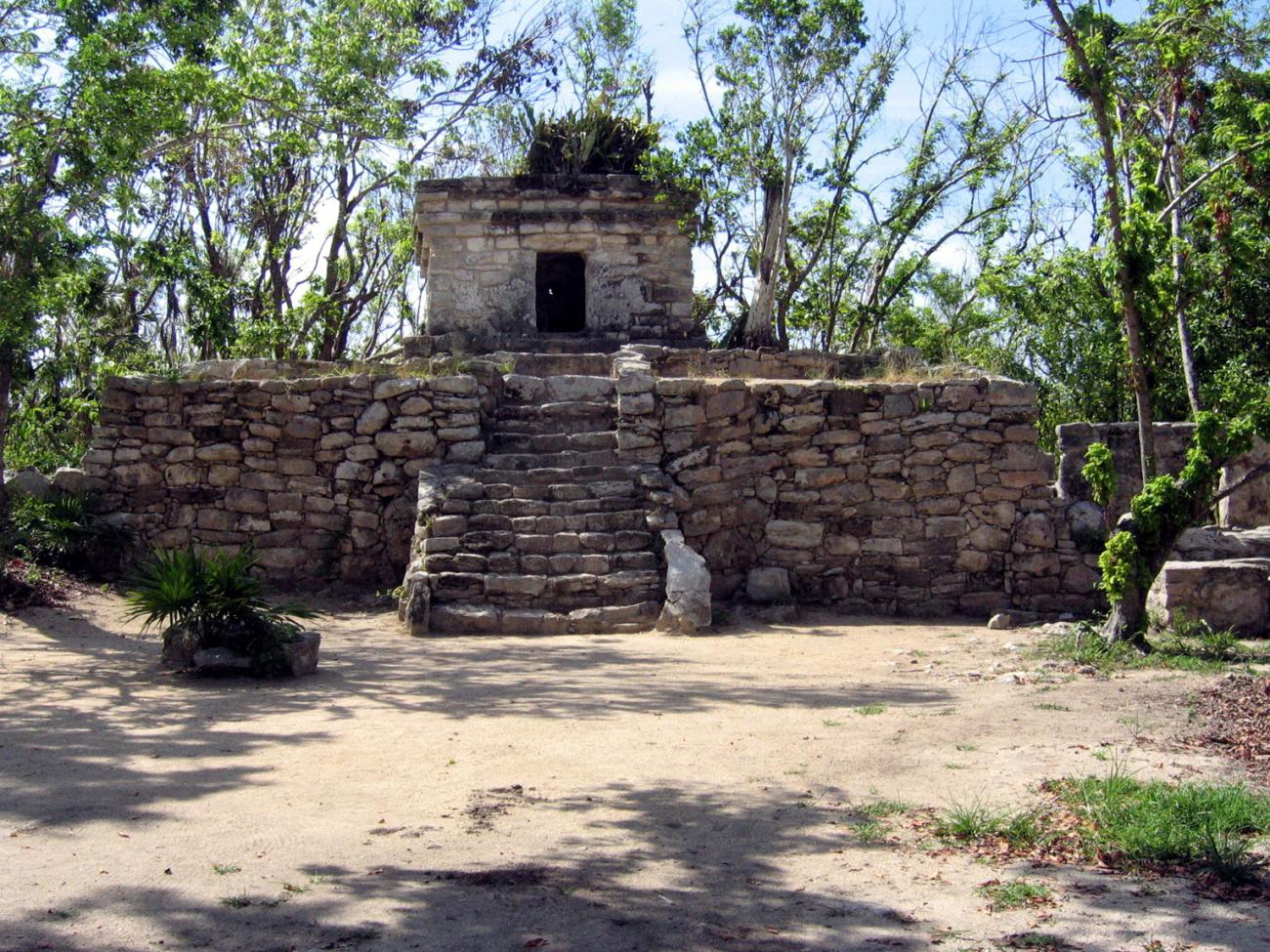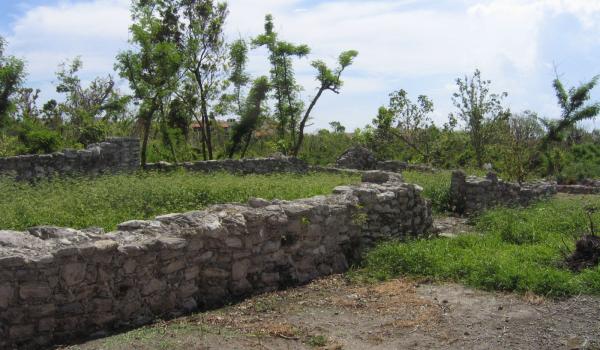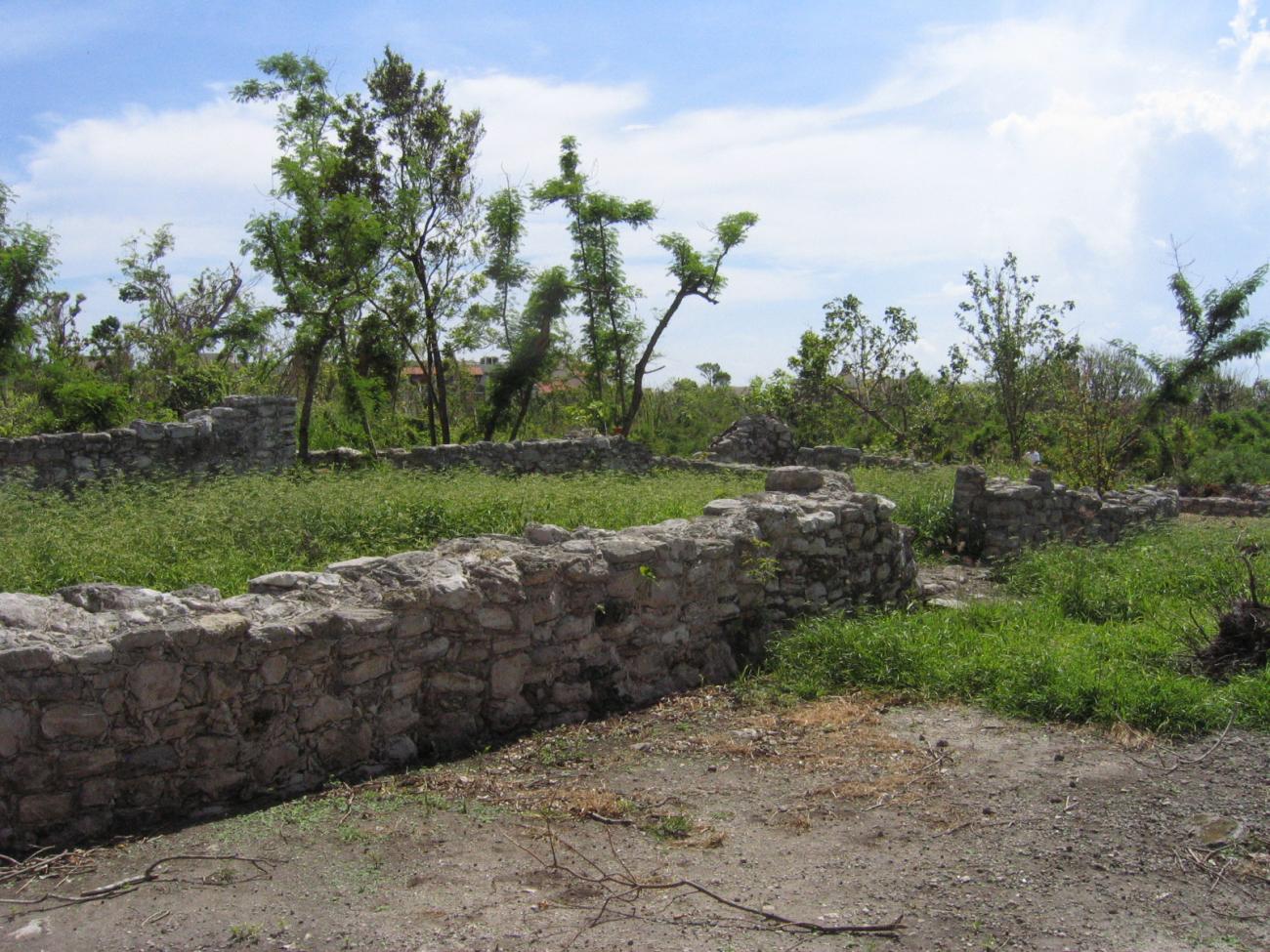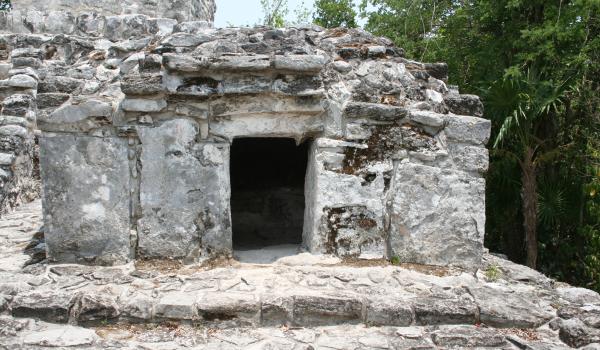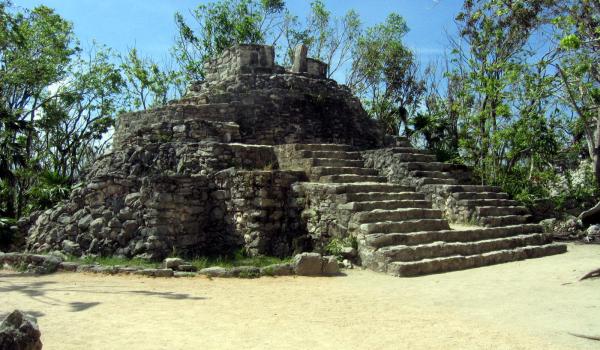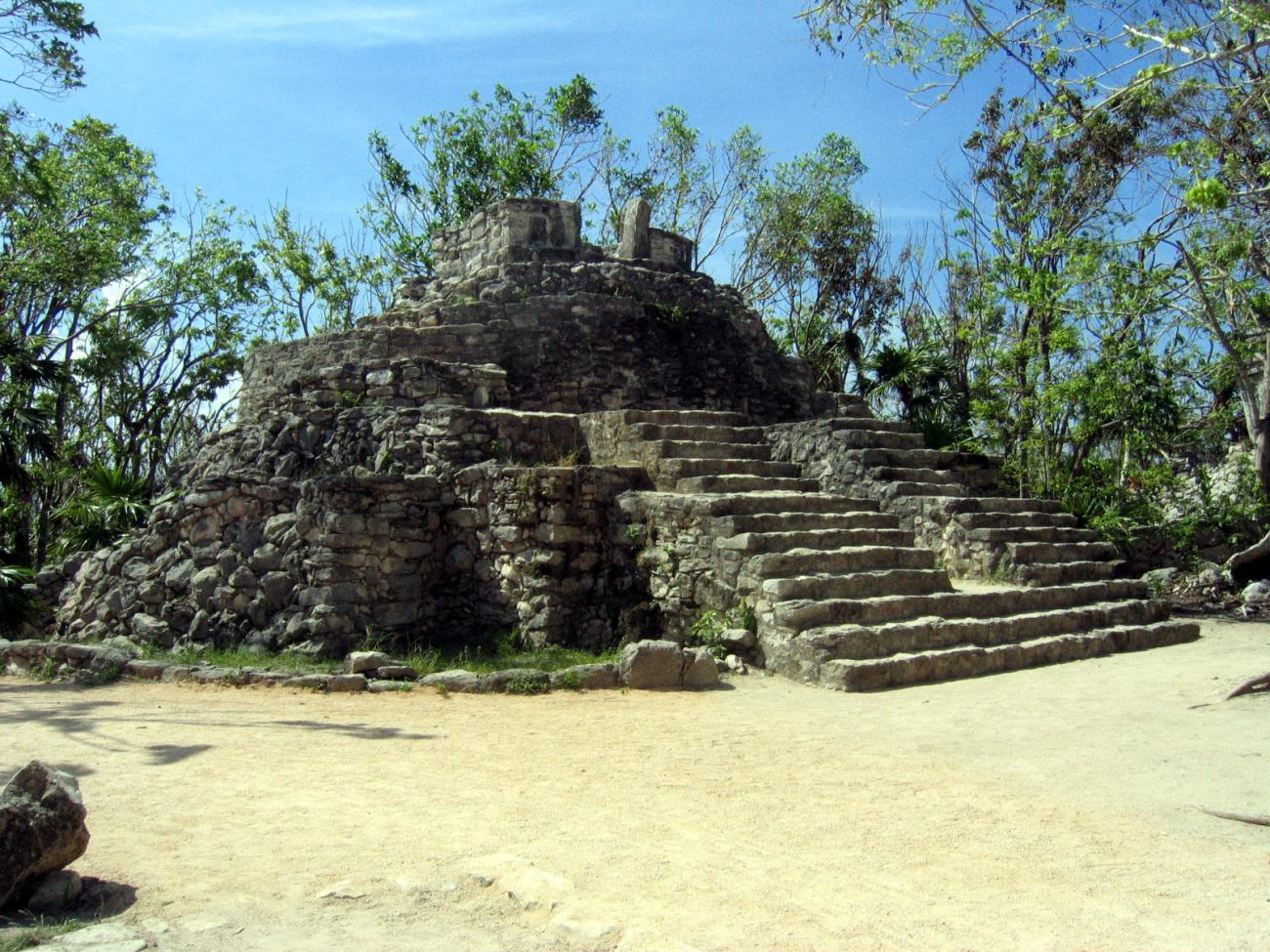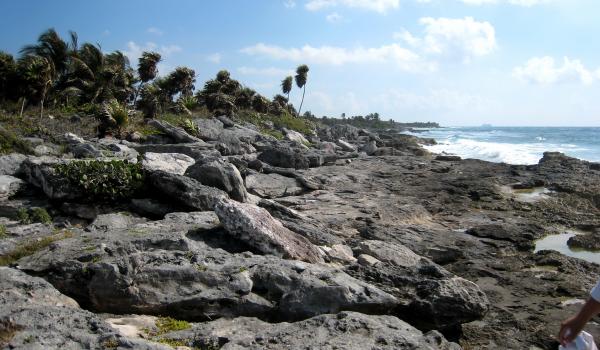Various authors have identified Xcaret as the pre-Hispanic and colonial port of Polé, which is mentioned in historical sources. It was brought to light in 1926 by the expedition of Herbert Spinden and Gregory Mason. The site’s most important groups of buildings are distributed along the coast and are separated from the sea by a wall whose purpose was to restrict access from the sea to the ceremonial sites, as much as for defense. The residential area consists of small platforms, rooms and a system of low dry stone walls delimiting homes and cultivated plots. These practically extend the length of the coast and for a few miles inland.
Among the useful natural features are a series of cenotes which provided fresh water, as well as small hollows in the ground (known locally as “rejoyadas”) where the soil is thicker, providing a superb environment for certain crops. Some hollows contain pre-Hispanic mines where sascab or limestone was extracted for building, while others have caves used occasionally for rituals invoking rain, and even for burials.
The significance of ancient Polé, now known as Xcaret, arose from its position on the mainland in front of the island of Cozumel, which was highly important in commercial and religious terms, making Polé one of the principal embarkation points for the island. Cozumel possessed a famous sanctuary of the goddess Ixchel, and was a pilgrimage site for people who traveled from Yucatán, Tabasco, Xicalango and Champoton via the port of Polé. This fact undoubtedly also secured the commercial status of Polé, since it was on the coastal trade route which encircled the Yucatan peninsula down to Honduras. Meanwhile sixteenth century documents record the passage of Adelantado Montejo through Polé in 1528 and that of his nephew in 1543. Other historical documents between 1549 and 1582 mention Polé and it appears on various maps between 1766 and 1878, on more or less the modern site of Xcaret. The link between Xcaret and Polé is reinforced by the presence of a small church on the site, whose precise date of construction remains unknown.
Xcaret dates back to the Late Preclassic, in other words to the early years of the Common era, when its inhabitants lived on the sea shore in groups of small fishing and farming communities. In the Classic period from 200 to 900 AD, coastal communities including Xcaret attained a higher level of social and economic development, as well as elaborate religious expression. This can be seen in the architecture, funerary rites, pottery and in its art generally. In terms of pottery, there is a local tradition closely tied to Cozumel in addition to the tradition covering the north Yucatan and Belize.
The Postclassic, from 900 to 1520, saw population growth and a peak of economic development. A uniform architectural style particular to the coast known as “east coast style” arose in the heyday of the coastal settlements. The horizontal plane of the buildings is emphasized, with construction on small platforms or large bases, with recessed lintels or frames which sometimes surrounded friezes decorated with geometrical designs. Columns and mural painting were common. With its roughly finished stone, the masonry was not generally of a high quality, a shortcoming that was made good by a thick covering of stucco, to which color was then applied.

